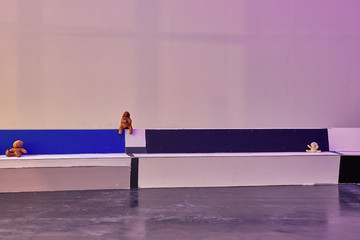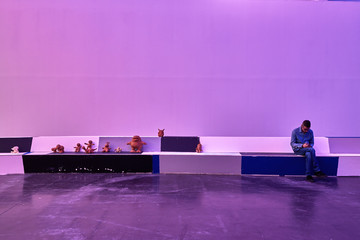Pia Camil
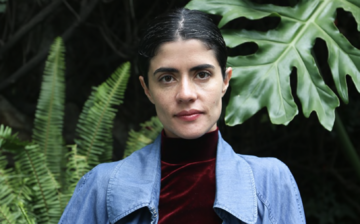
Pia Camil (b. 1980) lives and works in Mexico City.
She has a BFA from the Rhode Island School of Design and an MFA from the Slade School of Fine Art, London.
Her work has been exhibited internationally with recent solo-exhibitions including : Rie Ahora Llora Despuès at Galerie OMR, Vélo Revelo at Clark Institue USA, Fade to Balck at Queens museum NYC, Here Comes the Sun at Salomon R. Guggenheim Museum, Bara, Bara, Bara, at Tramway Art Space, Glasgow (2019), Split Wall at Nottingham Contemporary (2018) ; They, at Galerie Sultana (2018); Bara, Bara, Bara at Dallas Contemporary (2017) ; Home Visit at Museum Ludwig, Cologne (2016) ; Slats, Skins & Shopfittings at Blum & Poe, New York (2016) ; A Pot for a Latch, New Museum, New York (2016); Skins, Contemporary Arts Center, Cincinnati (2015); The Little Dog Laughed, Blum & Poe, Los Angeles (2014); Espectacular Telón at Sultana Gallery, Paris (2013); Cuadrado Negro, Basque Museum Centre for Contemporary Art, Vitoria-Gasteiz, Spain (2013). Recent group exhibitions include: Protest! at Centro Pecci, Prato, Desert X Biennial, California (2019); Art Basel Cities, Buenos Aires, Argentina (2018); LISTE, with Galerie Sultana, Basel, Switzerland (2018); Descheas at Instituto de Vision, Bogota (2017); «Womenhouse », Monnnaie de Paris (2017); « Performance ! », Le Tripostal, Lille (2017).
Camil’s work is in the permanent collection of Salomon R. Guggenheim Museum, Centre Georges Pompidou, Paris, La Colección Jumex, Mexico, Blanton Museum of Art, Austin (USA), and at the Kadist collection amongst others.
Camil’s work is usually associated to the mexican urban landscape, the aesthetic language of modernism and its relationship to retail and advertising. Recently she has engaged in public participation as a way to activate the work and engage with the politics of consumerism.
Through her work Pia Camil has shown a proclivity to failure or the decaying associated to the mexican urban landscape, aspects of modernist culture and traces of art history. Her practice has explored the urban ruin – including paintings and photographs of halted projects along Mexico’s highways (highway follies); abandoned billboards that become theatre-like curtains therefore theatricalizing failed capitalist strategies (espectaculares), or the problems and contradictions that arise when engaging with iconic art works (No A trio A or Cuadrado Negro).
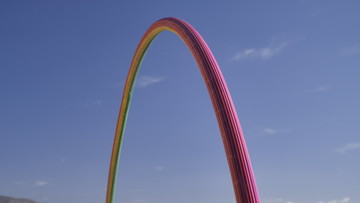
Pia Camil,
LOVER’S RAINBOW, 2019, installation for Desert X biennal
Ríe ahora, Llora despúes
“Que se passe-t-il lorsque cet espace, un espace de clarté de pensée, un espace expressif, que Vivian Gornick décrit comme un rectangle chatoyant, s’ouvre si largement qu’il se déverse dans le monde ? Il s’agit d’un processus personnel de pensée et de création, plutôt que d’un processus purement conceptuel. La porosité : il y a le risque, il y a l’instinct et la vulnérabilité. Boîtes de plaisir. Et de la douleur”.
“What happens when this space, a space of clarity of thought, an expressive space, which Vivian Gornick describes as a shimmering rectangle, opens so wide it pours forth into being in the world? This is a personal process of thinking and coming into being, rather than a purely conceptual one. Porousness: there is risk, there is gut, and vulnerability. Boxes of pleasure. And pain.”
Gabriela Jauregui
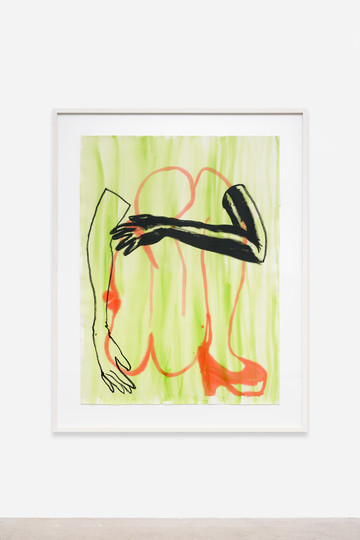

Watercolor and oil sticks on 100% cotton paper
113,5 x 84,5 cm (painting) - 138,5 x 109,5 cm (framed)
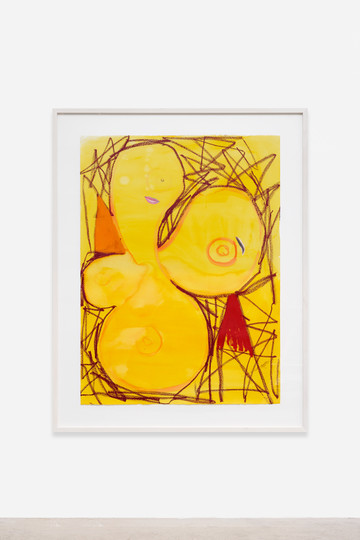
Watercolor and oil sticks on 100% cotton paper
113,5 x 84,5 cm (painting) - 138,5 x 109,5 cm (framed)
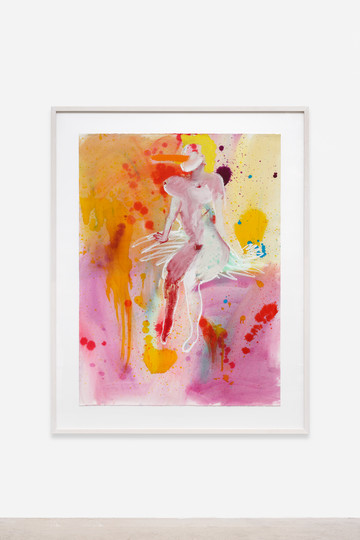
Watercolor and oil sticks on 100% cotton paper
113,5 x 84,5 cm (painting) - 138,5 x 109,5 cm (framed)
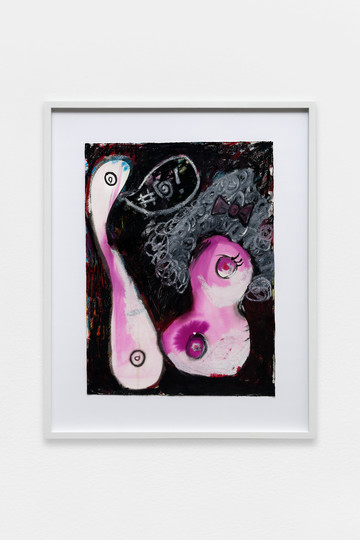
Watercolor, ink and oil sticks on 100% cotton paper
56 x 41 cm (painting) - 71 x 56 cm (framed)
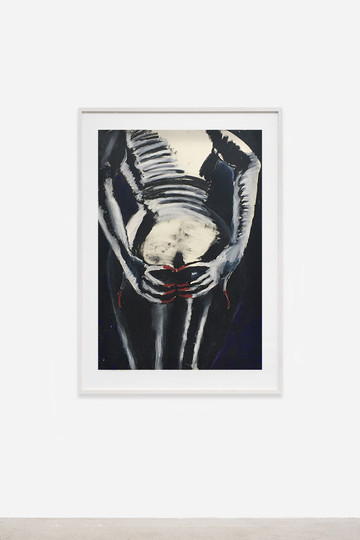
oil sticks on 100% cotton paper
95 x 65 cm - 110 x 80 cm (framed)
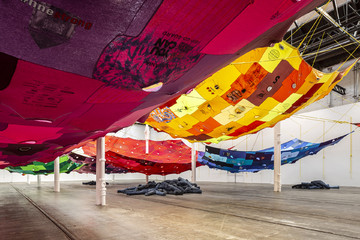
“Bara, Bara, Bara”, Tramway, Glasgow 2019
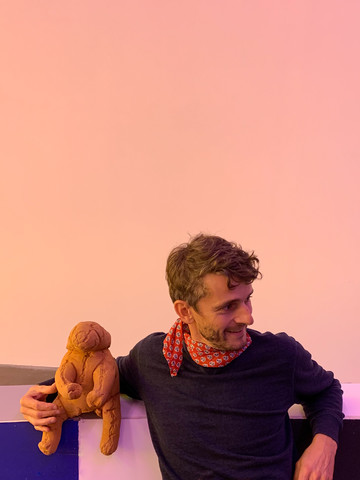
Olivier Millagou
Olivier Millagou was born in Toulon (France), in 1974. He lives and works in Sanary sur Mer (France).
Recent solo shows include : “Winter a Gogo”, Chantier Naval Borg, Marseille, “Wild On The Beach”, Villa Tamaris - La Seyne sur Mer (2019); “For Those Who Think Young”, Le Panorama, La Friche, Belle de Mai - Marseille (2019); “A Swingin’ Summer”, Galerie Sultana, Paris (2019); “Blue Moon”, Ecole d’art de Belfort, France (2017); “One Way Wahine”, Galerie Sultana, Paris (2016); “Out of Sight”, Galerie Sultana, Paris (2014).
He also participated in group shows such as Last chance to see it, Petach tickva Museum of art, Israel (2018); Frieze, with Galerie Sultana, Londres (2018); Les hommes de la Mancha, Galerie Double V, Marseille (2018); Notes for a Shell, More Projects, Marseille (2018); The Design Parade, Toulon (2018); Observations sonores, Musée Gassendi, Digne (2016); Fresh Painting, French Painting, The Breeder Gallery, Athens (2015).
Millagou’s works are in the permanent collection of CNAP (Centre National des Arts Plastiques), Paris and of FRAC PACA (Fonds Régionaux d’Art Contemporain, Provence-Alpes-Côte d’Azur).
Eco Plush
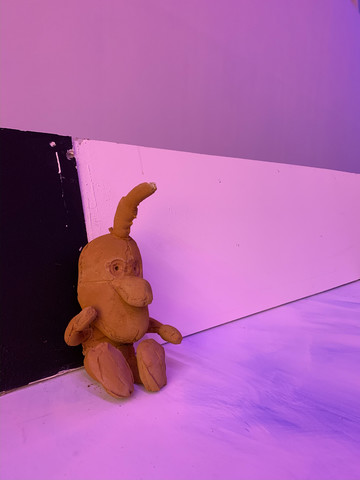
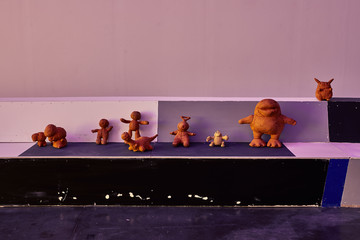
Olivier Millagou arpente les plages de la Méditerranée, non loin de chez lui à Sanary sur mer. Elles sont devenues un studio à ciel ouvert. Nous lui attribuons aisément cette localité car, depuis plusieurs années, il met sur pied une technique de fabrication de moules à partir du sable qui s’y trouve, et qu’il creuse. Il en résulte ses sculptures totémiques. Pour Eco Plush, une série de peluches en céramique, le principe est inverse. Il ne s’agit pas ici de creuser le sol pour y faire un moule mais bien de collecter les peluches pour les évider. La forme est celle du jouet et, à travers lui, se dessine d’autres histoires, à commencer, peut-être par la perte de notre enfance. Les peluches, qu’elles soient Mickey ou Teletubbies, racontent une technique de divertissement dépassé à l’ère du tout numérique tout comme elles incitent, en creux, à une plus grande implication de la main dans la manipulation de la terre nécessaire à la technique de la céramique.
Olivier Millagou walks the beaches of the Mediterranean, not far from his home in Sanary sur mer. They have become an open-air studio. We easily attribute this locality to him because, for several years, he has been developing a technique of making molds from the sand that is there, and that he digs. The result is his totemic sculptures. For EcoPlush, a series of ceramic plush toys, the principle is the reverse. It is not a question here of digging the ground to make a mold, but of collecting the plushs to hollow it out. The shape is that of the toy and, through it, other stories emerge, starting, perhaps, with the loss of our childhood. Plushs toys, whether Mickey or Teletubbies, tell of an entertainment technique out of date in the digital age just as they encourage, in the hollow, greater involvement of the hand in the manipulation of the earth necessary for the technique. ceramics.
Julia Marchand
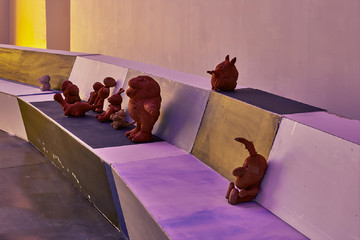
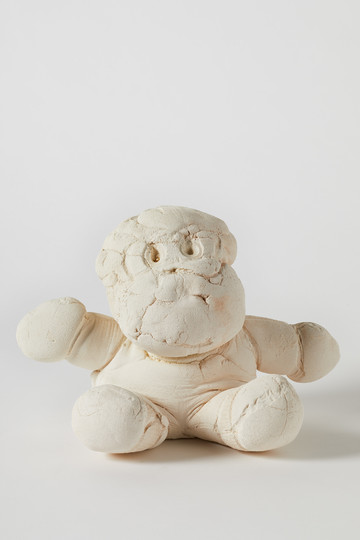
Olivier Millagou, Eco Plush 32 , 2019
Terre Cuite / Terracotta
3500 euros
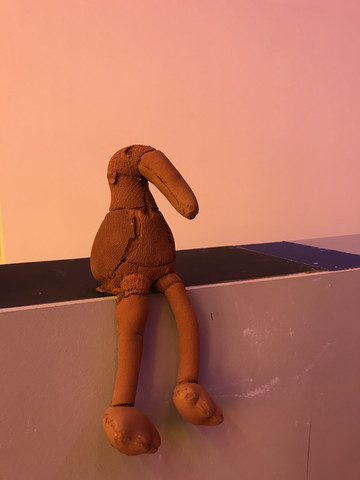
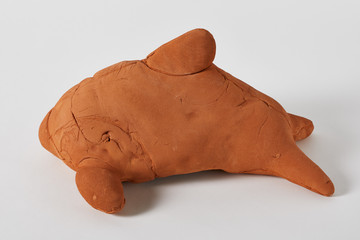
Terre cuite / Terracotta
42 x 34,5 x 20 cm
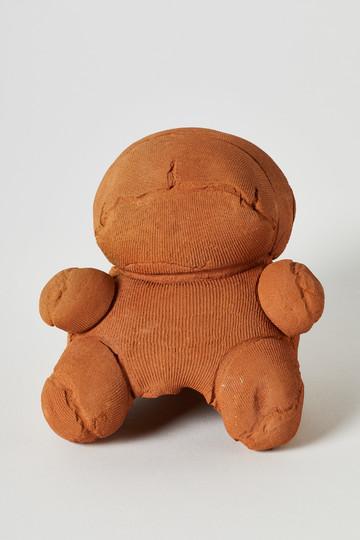
Terre cuite / Terracotta
12 x 13 x 11 cm
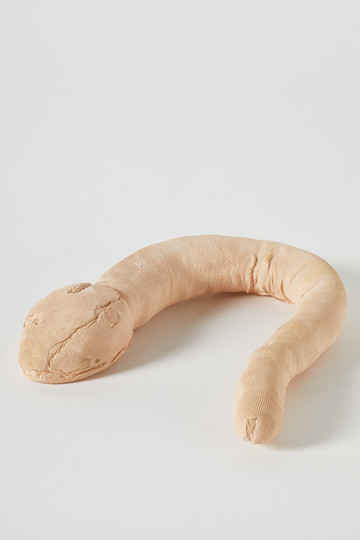
Terre cuite / Terracotta
24,5 x 22 x 5 cm
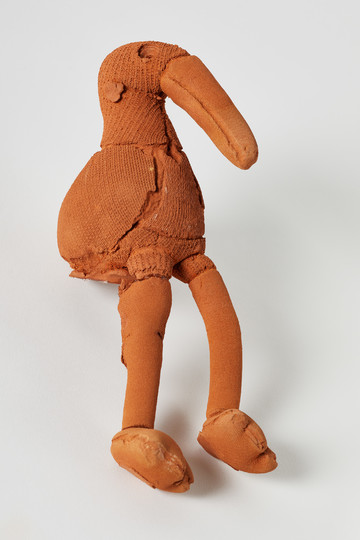
Terre cuite / Terracotta
16,5 x 10 x 24,5 cm
